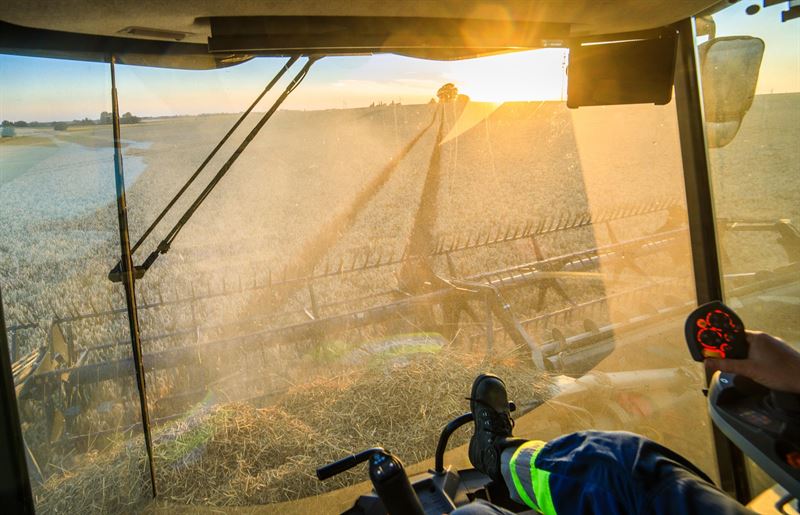Lantmännen’s forecast for this year’s Swedish harvest amounts to 4.6 million tonnes of grain. This is significantly lower than both last year’s harvest of 5.8 million tonnes, and a normal year* corresponding to 5.6 million tonnes.
“The limited rainfall during May and June has had a negative impact on the harvest potential throughout the country. Although the rain that fell in the beginning of July improves the conditions for harvesting, it will not compensate for the reduction caused by the drought before that. Nevertheless, it looks like the harvest will cover the Swedish needs of grain,” says Per Germundsson, Head of Grain Sourcing and Sales at Lantmännen’s grainunit.
The Swedish food supply starts with the harvest
A troubled world underlines the importance of a viable Swedish agriculture and a robust national food supply. The harvest is the basis for profitability in agriculture and it is of great importance that farmers can harvest both good quantities and qualities. This is particularly important this year, as interest rates have risen and many farmers bought inputs last year at high prices, while the grain market has turned down. In the current circumstances, the economic risk for farmers is higher than an average year. Therefore, the harvest outcome is even more important.
“The 2023 harvest year poses major challenges for farmers. Costs for fuel and mineral fertilizers, among other things, have been very high, and at the same time the expected harvest outcome is significantly lower than for a normal year. This means that Swedish farmers in many cases face high financial risks,” says Per Germundsson.
Harvest results in recent years have shown large variations, with a very small harvest during the extreme drought year 2018. Expectations for this year’s harvest are higher than the outcome in 2018, mainly due to larger areas with autumn sown crops and more favorable temperatures in early summer. However, this year’s harvest forecast shows the long-term need for climate adaptation in Swedish agriculture to ensure a harvest that meets the needs of the Swedish food supply and preparedness.
“The harvest is very important to secure a thriving Swedish agriculture and of great importance for the Swedish food supply and preparedness. Therefore, it is important that we further develop new drought-resistant crops, efficient irrigation and drainage systems and continue to strengthen the profitability and competitiveness of Swedish agriculture,” says Magnus Kagevik, Lantmännen’s Group President and CEO.
Farmers across the country are now preparing for intensive work on this year’s important harvest. The harvest takes place between July and October, afterwhich the harvest outcome is compiled.
Read more about the 2023 harvest and the journey towards it here.
*A normal year is calculated as the average of five years after excluding the best and worst years from the last seven years.
The harvest forecast is based on an estimated yield based on weather data, precipitation, temperature, and area data for each county, which farmers in Sweden have submitted to the Swedish Board of Agriculture. Historical data, such as returns for similar years, are also taken into account. Assessing the harvest in advance is difficult and it is therefore important to keep in mind that the harvest forecast is precisely a forecast.

















